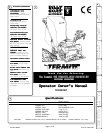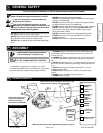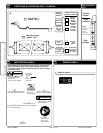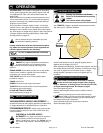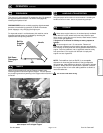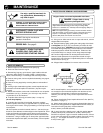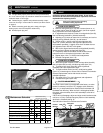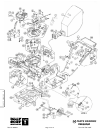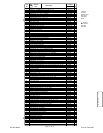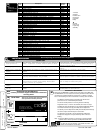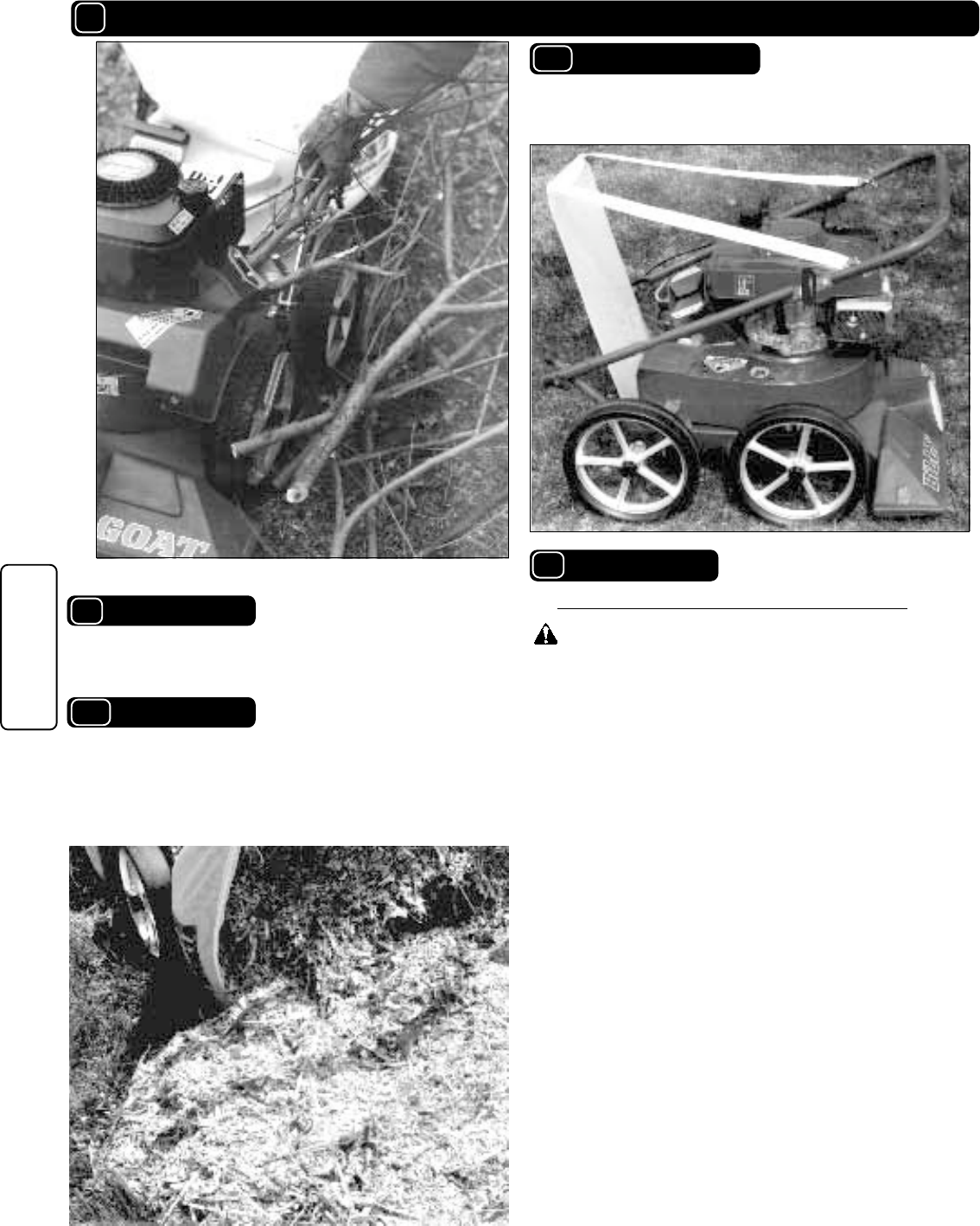
Part No. 890207 Form No. F021795E
By removing the debris bag, quick disconnect and leaving the bag
support tray in place, the operator’s handle can be folded down to
save space when transporting or storing unit (see fig 4).
Page 6 of 12
OPERATION 6
(fig. 3)
Note: Frequently empty debris to prevent bag overloading with
more weight than you can lift.
An optional bag and dust cover is available for use where debris will be
vacuumed in dusty conditions (see Optional Accessories shown on
page 1.)
DO NOT place bag on or near hot surface, such as engine. Run
engine at 1/2 throttle f or first 1/2 hour to condition ne w bag. Your
new bag requires a break-in per iod to condition the pores of the
material against premature b lockage. The entire bag surf ace
ser ves as a filter , and must be ab le to breath to ha ve good vacuum
perf ormance.
Be sure engine has come to a complete stop before removing
or emptying bag.
This vacuum is designed for picking up trash, organic
material and other similar debris (see Safety Warnings page 2-3).
However, many vacuums are used where dust is mixed with
trash. Your unit can intermittently vacuum in dusty areas. Dust
is the greatest cause of lost vacuum performance. However,
following these rules will help maintain your machine's ability to
vacuum in dusty conditions:
•Run machine at idle to quarter throttle.
•The debris bag must be cleaned more frequently. A vacuum
with a clean, pillow soft bag will have good pickup performance.
One with a dirty, tight bag will have poor pickup performance. If
dirty, empty debris and vigorously shake bag free of dust.
•Machine or pressure-wash debris bag if normal cleaning does
not fully clean bag. Bag should be thoroughly dry before use.
Having one or more spare debris bags is a good way to reduce down time
while dirty bags are being cleaned.
•DO NOT leave debris in bag while in storage.
Debris bags are normal replaceable wear items.
Wood chips made from branches in your own yard make excel-
lent mulch. A thick blanket of wood chips around plants and
flowers keeps weeds out and moisture in (see fig. 3).
Vacuumed leaves, grass and other organic material from your own
yard can be emptied into a pile or composter to provide enriched
soil for later use as fertilizer in gardens and flower beds (see fig. 3).
Note: Allow green chips to dry before spreading around living
plants.
1616
1616
16
OPERATION continued
MULCH
COMPOST
16.16.
16.16.
16.
1010
1010
10
16.16.
16.16.
16.
99
99
9
DEBRIS BAG
16.16.
16.16.
16.
33
33
3
16.16.
16.16.
16.
1111
1111
11 FOLDING HANDLE
(fig. 2)
Note: Dry wood is harder to
chip than green wood.
(fig. 4) Push Model Shown



